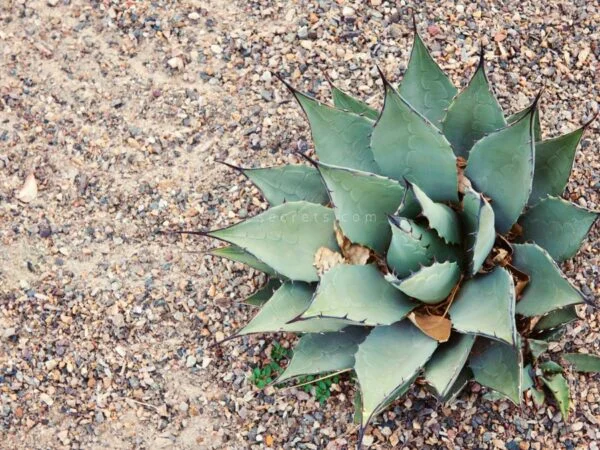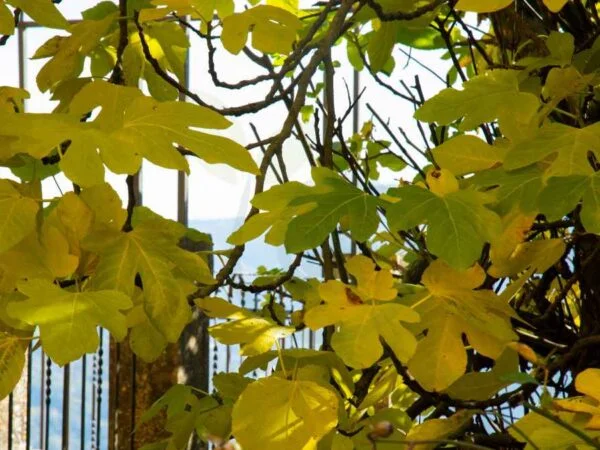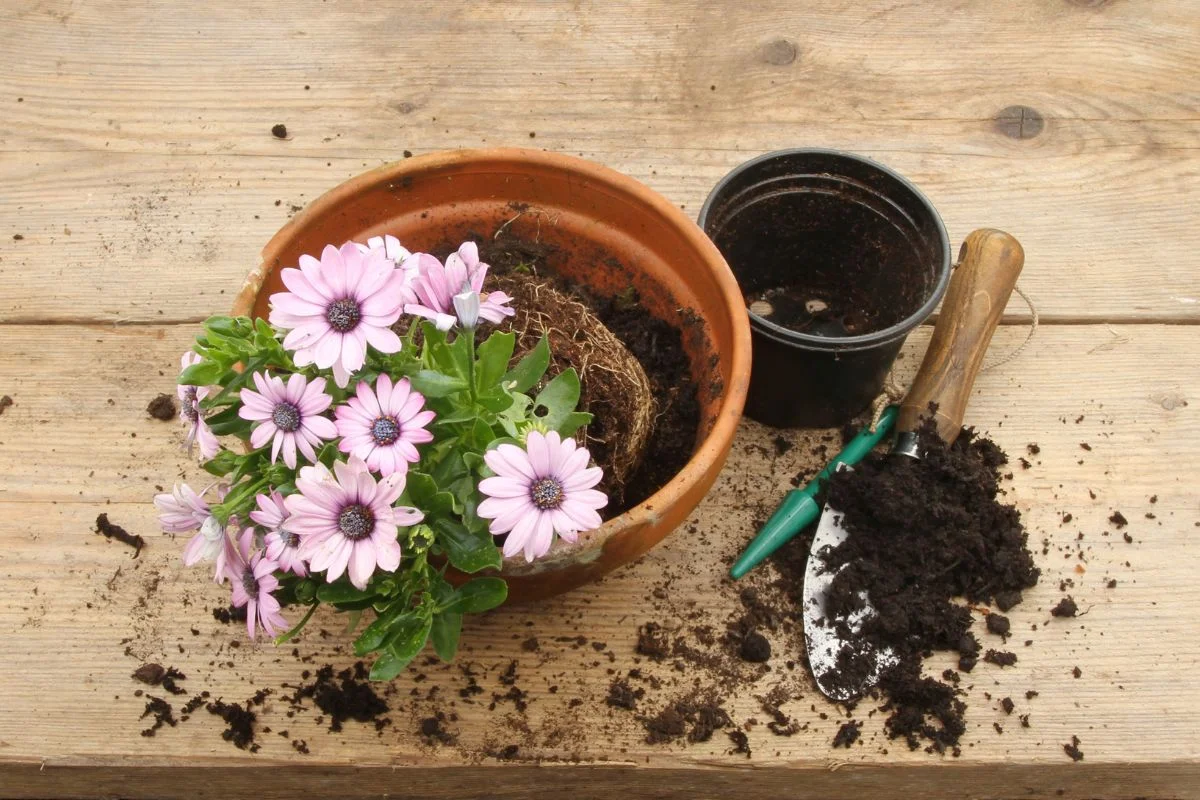
Are you struggling to care for your osteospermum plants? Discover expert tips and tricks to ensure your osteospermum plant thrives and blooms beautifully. Learn the essential steps for successful osteospermum plant care, from watering techniques to ideal sunlight exposure.
Unlock the secrets to nurturing vibrant and healthy osteospermum plants with our comprehensive guide. Whether you're a seasoned gardener or just starting, this resource will equip you with the knowledge needed to cultivate stunning osteospermum blooms in your garden.
Key Takeaways
- Regular watering and well-draining soil are crucial for healthy Osteospermum plants.
- Prune spent flowers to encourage continuous blooming and maintain plant shape.
- Consider propagating Osteospermum through stem cuttings for easy and cost-effective plant expansion.
- Monitor for pests like aphids and treat promptly to prevent damage to your Osteospermum plants.
- Incorporate Osteospermum flowers in your garden design for vibrant color accents and a touch of elegance.
- Follow the seasonal care guide to ensure optimal growth and blooming throughout the year.
Osteospermum Overview
Special Features
Osteospermum flowers stand out for their vibrant colors, ranging from shades of pink, purple, and white. They boast a long blooming season, adding beauty to gardens for an extended period. Their adaptability makes them suitable for various climates, while their low maintenance requirements make them ideal for both experienced and novice gardeners.
Light Requirements
These plants thrive in full sunlight, requiring at least 6-8 hours of direct sun daily. Adequate sunlight is crucial for their growth and blooming. To ensure optimal light exposure, position osteospermum plants, also known as daisies, in areas where they can receive ample sunlight throughout the day.
Soil Needs
Healthy osteospermum plants demand well-draining soil to prevent waterlogging, which can lead to root rot. The soil quality directly impacts the plant's overall health and blooming capacity. Optimal soil conditions ensure proper nutrient absorption and support robust growth.
Watering Practices
Maintaining a balance in watering practices is essential for the well-being of osteospermum plants. Proper watering techniques involve keeping the soil moist but not waterlogged. Overwatering should be avoided to prevent root damage and fungal diseases. The frequency of watering plays a significant role in determining the plant's health and blooming potential.
Popular Varieties
4D Sunburst
4D Sunburst is a vibrant variety of osteospermum plants that stand out for their unique color patterns. These flowers boast a stunning blend of hues, making them an eye-catching addition to any garden. Compared to other varieties, the 4D Sunburst variety is known for its striking and bold appearance.
When caring for 4D Sunburst plants, it's essential to provide them with ample sunlight for optimal growth. These plants thrive in well-draining soil and require regular watering to keep the soil moist but not waterlogged. Deadheading spent blooms can encourage continuous flowering throughout the season.
Violet Ice
Violet Ice is a captivating variety of osteospermum plants known for their delicate purple and white petals that resemble a beautiful ice formation. These flowers add a touch of elegance to gardens with their soft color palette and intricate patterns. Caring for Violet Ice plants involves ensuring they receive sufficient sunlight to bloom vibrantly.
To maintain Violet Ice plants, regular deadheading is crucial to promote new flower growth and prolong the blooming period. These plants prefer well-drained soil and benefit from occasional fertilization during the growing season to support healthy growth and abundant flowering.
Bright Lights
Bright Lights are a popular variety of osteospermum plants cherished for their vivid and cheerful blooms in an array of colors like yellow, pink, and orange. These flowers brighten up any garden landscape with their lively hues and charming presence. Growing Bright Lights in gardens offers a burst of color that attracts pollinators like bees and butterflies.
When caring for Bright Lights plants, ensure they receive full sun exposure to encourage robust blooming. Regular deadheading helps maintain the plant's energy for producing more flowers. Providing well-draining soil and occasional feeding with a balanced fertilizer can enhance the plant's overall health and flowering capacity.
Symphony Series
The Symphony Series encompasses a wide range of osteospermum plant cultivars, each offering a unique color palette ranging from pastel shades to vibrant tones. This series provides gardeners with diverse options to create stunning floral displays with contrasting or harmonious colors. Caring for Symphony Series plants involves understanding the specific needs of each cultivar within this collection.
To care for Symphony Series plants effectively, tailor watering schedules based on individual cultivar requirements as some may prefer slightly drier conditions compared to others. Regularly inspecting the plants for pests or diseases ensures early detection and prompt treatment if needed. Pruning leggy growth promotes bushier plants and encourages more flower production within the Symphony Series range.
Planting Tips
Location Selection
Select the best location for planting osteospermum based on factors like sunlight exposure and soil quality. Optimize plant growth by choosing a spot with adequate sunlight and well-draining soil. Ensure the location provides the necessary conditions for the plant's healthy development.
Soil Preparation
Prepare the soil before planting osteospermum to promote optimal growth. Amend the soil by adding organic matter to enhance drainage and nutrient availability. This step is crucial for ensuring that the plant thrives in its new environment.
Planting Depth
Determine the correct planting depth for osteospermum plants to support root development and overall health. Adjust the planting depth based on the plant's size and variety to facilitate proper growth. Planting too shallow or deep can impact the plant's ability to establish itself successfully.
Watering and Feeding
Frequency Tips
For watering, it's crucial to strike a balance. Water your osteospermum plants deeply but infrequently to avoid waterlogging. Ensure the soil dries out between watering sessions to prevent root rot.
When it comes to fertilizing, opt for a balanced liquid fertilizer. Feed your plants every two weeks during the growing season to promote healthy growth and vibrant blooms. Deadheading spent flowers regularly encourages continuous blooming.
To maintain plant health, make it a habit to check your osteospermums regularly. Look for signs of pests, diseases, or nutrient deficiencies. Prune any damaged or overgrown parts promptly to encourage new growth.
Fertilization Schedule
Aim to fertilize your osteospermum plants every two weeks during the growing season. Use a balanced liquid fertilizer with equal parts nitrogen, phosphorus, and potassium for optimal growth and blooming. Avoid over-fertilizing as it can harm the plants.
Apply the fertilizer directly onto moist soil around the base of the plant. Water thoroughly after fertilizing to help nutrients penetrate the roots effectively. Proper fertilization is key to ensuring robust growth, abundant flowering, and overall plant vigor.
Remember that different types of fertilizers exist, such as slow-release or water-soluble options. Choose one that suits your gardening style and follow the manufacturer's instructions for application frequency and dosage.
Pruning and Maintenance
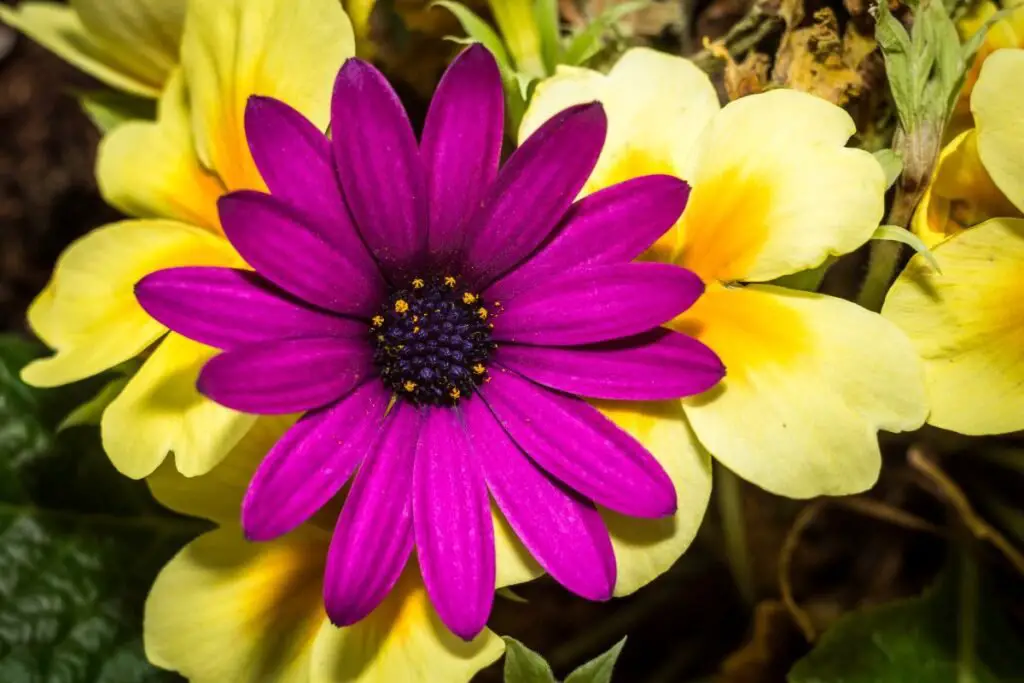
Pruning Techniques
Prune osteospermum plants regularly by cutting back spent blooms to encourage new growth. This process helps maintain the plant's shape and promotes continuous blooming. To prune effectively, use sharp scissors or pruning shears to avoid damaging the plant.
Regular pruning benefits osteospermum plants by ensuring they remain compact and bushy. It also stimulates flower production, leading to a more abundant display of colorful blooms. By removing dead flowers, you redirect the plant's energy towards new growth and flowering.
To prune osteospermum effectively, start by inspecting the plant for any dead or fading blooms. Using clean tools, snip these flowers off just above a set of leaves. Ensure you cut at a slight angle to prevent water from settling on the cut stem, which can lead to rot.
Health Checks
Conduct regular health checks on osteospermum plants by examining their leaves for signs of discoloration or damage. Look out for common issues like pest infestations or fungal infections that may affect the plant's overall health.
If you notice any problems during your health check, address them promptly to prevent further damage. Treat pest infestations with organic insecticides, and fungal infections with appropriate fungicides. Early intervention is crucial in maintaining the health and vitality of your plants.
Early detection plays a vital role in preserving the health of osteospermum plants. By spotting issues early on, you can take immediate action to rectify them before they escalate. Regularly inspecting your plants allows you to intervene promptly and ensure they thrive throughout the growing season.
Propagation Methods
Cuttings
To propagate osteospermum plants from cuttings, start by selecting healthy stems. Trim them just below a leaf node. Place the cuttings in a well-draining medium, keeping them moist but not waterlogged. Rooting hormones can aid in faster root development.
Ensure the cuttings are kept in a warm, humid environment to encourage root growth. Mist the cuttings regularly to maintain humidity levels and prevent wilting. Once roots have established, transplant the cuttings into individual pots for further growth.
Seeds
Growing osteospermum plants from seeds offers an alternative propagation method. Begin by sowing the seeds in a seed-starting mix, lightly pressing them into the soil surface. Keep the soil consistently moist but not soggy to promote germination.
Seedlings require ample sunlight to thrive, so place them in a sunny location or under grow lights. Thin out overcrowded seedlings to prevent competition for resources and encourage healthy growth. Regularly fertilize young seedlings to support their development.
Advantages:
- Cost-effective way of propagating plants
- Provides a wide variety of cultivars to choose from
Challenges:
- Longer time to reach maturity compared to cuttings
- Requires more attention and care during the initial growth stages
Pest and Disease Management
Common Pests
Pests like aphids and spider mites are common threats to osteospermum plants. Look for yellowing leaves or sticky residue as signs of infestation. To control pests, handpick them off or use insecticidal soap as a natural solution.
Chemical options like neem oil can also effectively manage pests on osteospermum plants. Ensure to apply treatments early to prevent severe damage. Regularly inspect your plants to catch pest issues early.
Disease Prevention
Prevent diseases in osteospermum plants by ensuring proper air circulation and avoiding overhead watering. Diseases like powdery mildew can be prevented by keeping foliage dry. Watch for symptoms like white powdery spots on leaves.
Maintain plant health by providing adequate sunlight and well-draining soil. Avoid overcrowding plants to reduce the risk of diseases spreading. Prune dead or infected parts promptly to prevent further spread of diseases.
Garden Design Ideas
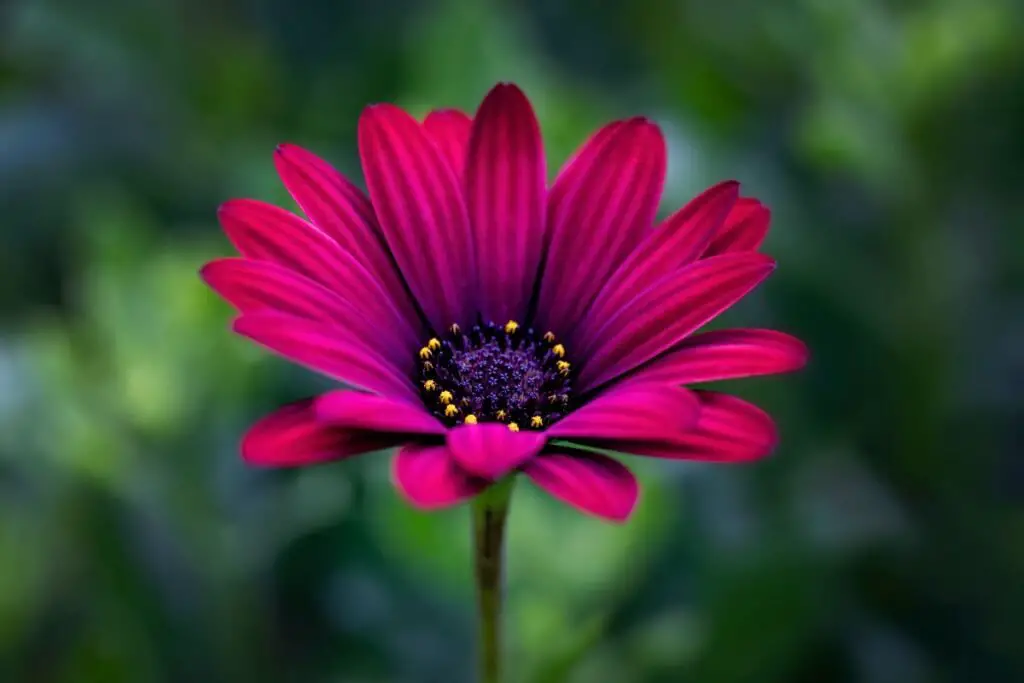
Companion Planting
Lavender and Sage
- Explore companion planting with lavender and sage alongside osteospermum.
- Combining these plants in garden settings can enhance visual appeal and plant health.
- Lavender and sage can provide natural pest control and attract beneficial insects to your garden.
Echinacea and Coreopsis
- Discover the compatibility of echinacea and coreopsis with osteospermum plants.
- Planting these species together can create a vibrant landscape with contrasting colors.
- By combining echinacea, coreopsis, and osteospermum, you can establish a diverse and visually appealing garden design.
Seasonal Care Guide
Spring Tips
Spring is a crucial time for osteospermum plants as they begin to awaken from winter dormancy. Prune any dead or damaged branches to encourage new growth. Fertilize the plants with a balanced fertilizer to support healthy blooming. Prevent pests by regularly inspecting the plants and taking necessary actions.
Summer Care
Watering becomes essential during the hot summer months to keep osteospermum plants hydrated. Deadhead spent blooms regularly to promote continuous flowering. Protect the plants from heat stress by providing shade during peak sunlight hours. Consistent care in summer ensures vibrant and healthy plants.
Autumn Advice
As autumn approaches, prepare your osteospermum plants for the cooler weather ahead. Continue pruning and fertilizing but adjust the routine for the changing season. Transition the plants gradually to help them acclimate to lower temperatures. Ensuring plant health in autumn sets the foundation for their well-being in the coming months.
Closing Thoughts
You've now mastered the essentials of caring for osteospermum plants, from selecting the right variety to maintaining them throughout the seasons. By following the planting, watering, and pruning tips provided, you can ensure vibrant blooms and healthy growth in your garden. Remember to stay vigilant against pests and diseases, employing the management techniques outlined to keep your plants thriving.
As you embark on your journey of nurturing osteospermums, don't hesitate to experiment with propagation methods or incorporate these stunning flowers into your garden design. Your commitment to proper care will be rewarded with a colorful and flourishing outdoor space that brings joy and beauty. Share your newfound knowledge with fellow gardening enthusiasts and continue to expand your green thumb expertise.
Frequently Asked Questions
How do I care for Osteospermum plants?
To care for Osteospermum plants:
- Plant in well-draining soil
- Place in full sun
- Water deeply but infrequently
- Fertilize sparingly
- Deadhead spent flowers regularly
Can I propagate Osteospermum plants from cuttings?
Yes, you can propagate Osteospermum plants from cuttings. Here's how:
- Take a cutting from a healthy plant
- Dip the cutting in rooting hormone
- Plant in a well-draining medium
- Keep moist and provide indirect light
What are common pests and diseases affecting Osteospermum plants?
Common pests include aphids, spider mites, and whiteflies. Diseases like powdery mildew and botrytis can also affect Osteospermum plants. Treat pests with insecticidal soap and diseases with fungicides as needed.
When should I prune my Osteospermum plants?
Prune your Osteospermum plants after flowering to encourage new growth and maintain shape. Remove dead or leggy stems and spent flowers. Regular pruning helps promote a bushier plant with more blooms.
How should I design my garden using Osteospermum plants?
For garden design ideas with Osteospermum plants:
- Create colorful borders or edging
- Mix with other sun-loving perennials
- Plant in containers for a pop of color on patios
- Use as ground cover for slopes or rock gardens
Image Source: Paid image from CANVA

